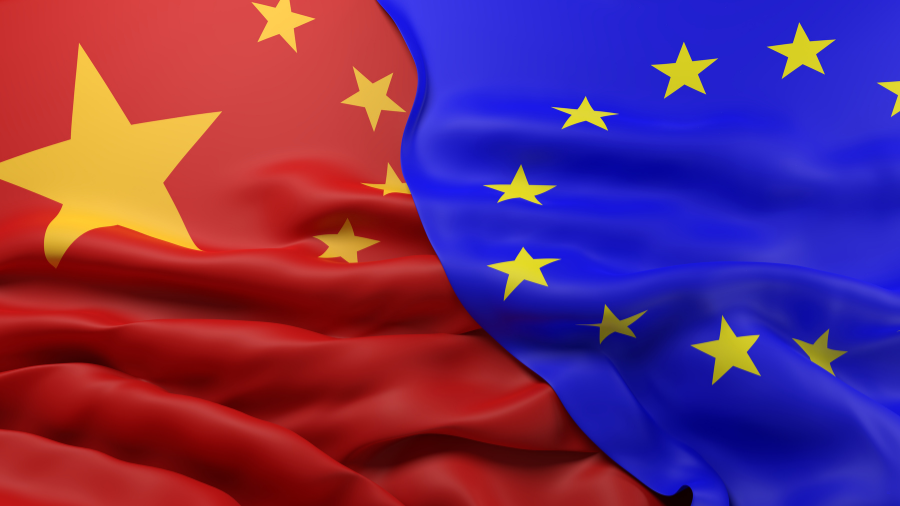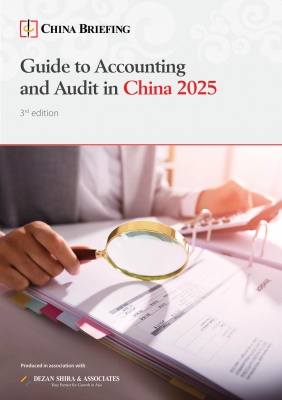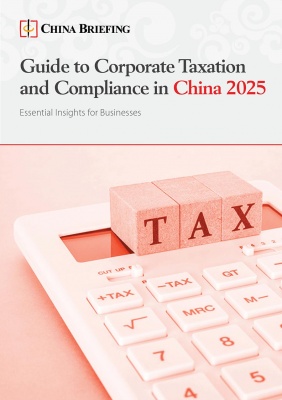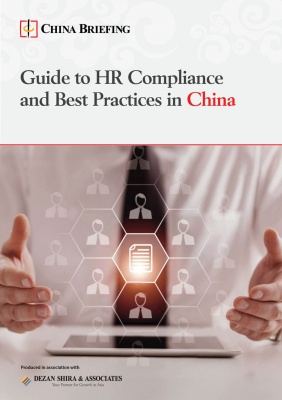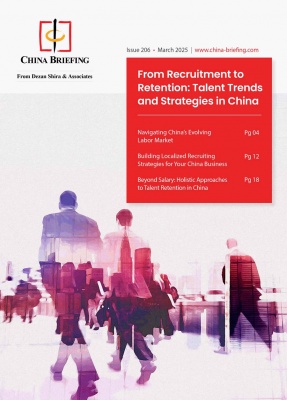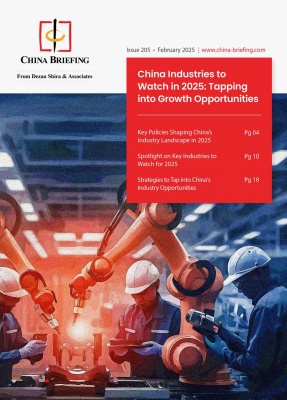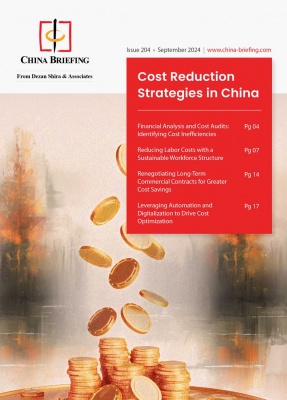China’s Central Economic Work Conference (CEWC): Key Takeaways and Priorities for 2025
The 2024 China’s Central Economic Work Conference (CEWC) outlined China’s economic priorities and strategies for 2025. Among others, the government identified weak domestic demand as the primary challenge facing the nation’s economy and signaled plans to intensify fiscal and monetary measures in 2025 to address this issue. Successful implementation of these policies will be critical to navigating domestic challenges and global economic uncertainties.
China’s annual Central Economic Work Conference (CEWC), held on December 11-12, 2024, reinforced a familiar yet urgent narrative: sustaining economic growth remains the country’s primary objective. In a comprehensive post-conference readout, the leadership outlined its fiscal and economic priorities for 2025, pledging robust measures to stimulate domestic demand and support the private sector.
This year’s conference emphasized a strategic pivot toward addressing structural challenges and enhancing economic resilience amidst global and domestic headwinds. The statement highlighted plans to expand fiscal spending, increase the fiscal deficit ceiling, and implement targeted measures to reinvigorate private sector investment and household consumption.
In his speech, President Xi Jinping provided a critical assessment of 2024’s economic performance while setting the tone for the coming year. The discussion placed significant focus on bolstering domestic demand, stabilizing the property sector, and leveraging innovation to drive sustainable growth.
As in previous years, the CEWC offers critical insights into Beijing’s multifaceted approach to balancing short-term recovery with long-term economic transformation. By revisiting core challenges such as deflationary pressures, property market instability, and regional fiscal health, the conference underscored the leadership’s determination to maintain stability while navigating complex economic dynamics at home and abroad.
Key takeaways from the 2024 CEWC
The 2024 CEWC reaffirmed China’s dedication to a stable and adaptive economic strategy, signaling a continuation of policy priorities with notable shifts to address evolving challenges. The readout of the conference, which laid out the overarching goals and key tasks for the upcoming year, highlighted nine major areas of focus, building on the foundation established in 2023 while introducing adjustments in response to emerging pressures.
Overall, the conference outlined nine strategic priorities for the year ahead:
- Boosting domestic demand and investment efficiency: focus will be on stimulating household consumption and enhancing investment returns, signaling a shift to prioritize domestic demand as a key driver of growth.
- Technological innovation and modern industrial systems: Leveraging scientific and technological innovation, this task aims to modernize industrial systems and strengthen China’s global competitiveness.
- Deepening economic system: By implementing landmark reform measures, the government aims to tackle structural inefficiencies and promote sustainable development.
- Expanding high-level opening up: Stabilizing foreign trade and investment will remain a priority as China seeks to balance external pressures and maintain its role in global markets.
- Risk Prevention in Key Areas: Measures will be implemented to address financial and systemic risks, particularly in local government debt and other critical areas.
- Promoting urbanization and rural revitalization: Urban-rural integration will be advanced through coordinated policies that support modernization in both urban and rural settings.
- Strengthening regional strategies: Regional development strategies will aim to unlock growth potential and address imbalances across provinces and cities.
- Accelerating green transition: The government will push for comprehensive eco-friendly transformation to achieve sustainability and carbon reduction goals.
- Enhancing livelihoods and social stability: Public welfare will be prioritized to improve citizens’ quality of life, with a strong focus on maintaining social stability through grassroots governance measures like the “fengqiao experience” (枫桥经验).
All in all, CEWC emphasized a dual focus on expanding domestic consumption and improving investment efficiency as core strategies for stabilizing growth in 2025. The conference reaffirmed a “moderately loose” monetary policy, with plans for timely reductions in reserve requirements and interest rates to maintain sufficient liquidity. The People’s Bank of China (PBOC) signaled further easing, including an expected 50-100 basis point cut to the reserve requirement ratio (RRR) and a 30-basis point reduction to loan prime rates in 2025, aimed at aligning money supply and social financing growth with economic and price-level targets.
On the fiscal front, the CEWC pledged a “more proactive” policy approach, raising the fiscal deficit ratio closer to 4 percent of GDP to intensify government spending. Key measures include doubling the issuance of ultra-long-term special government bonds to RMB 2 trillion (US$274.963 billion) and increasing local government special bonds beyond 2024’s RMB 3.9 trillion (US$536.178 billion) quota.
How will China achieve economic growth in 2025?
In 2025, China’s economic growth strategy, as outlined by the CEWC, reflects a deliberate balance between continuity in policy objectives and adjustments to address emerging challenges. The guiding principle, consistent with past years, emphasizes stability while seeking progress (稳中求进) and prioritizing development before addressing problems (先立后破). These core tenets shape the government’s multifaceted approach to economic management.
Boosting domestic demand and improving investment efficiency
The CEWC placed significant focus on expanding domestic demand to combat sluggish consumption and reinvigorate the economy. This includes implementing special initiatives to stimulate household consumption, particularly among middle- and low-income groups (大力提振消费、提高投资效益,全方位扩大国内需求). Measures include raising basic pensions for retirees and subsidies for medical insurance, alongside efforts to develop diversified consumption scenarios, such as the “silver economy” and cultural tourism industries.
Strategic investments in major projects under the upcoming 15th Five-Year Plan will further enhance the alignment of fiscal and social objectives.
Advancing technological innovation and modern industrial systems
Scientific and technological innovation remains pivotal to China’s industrial strategy. The CEWC emphasized cultivating future industries like artificial intelligence (AI), green technology, and digital industries.
In recent years, China has strategically prioritized emerging industries like AI, quantum computing, new energy, and 6G networks to secure leadership in next-generation technologies. Significant investments and policies support these sectors, aligning with goals for innovation-led growth and technological self-sufficiency.
AI has seen rapid expansion, with the market projected to grow from RMB 213.7 billion (US$30 billion) in 2023 to RMB 811 billion (US$113.89 billion) by 2028, fueled by applications in healthcare, finance, and manufacturing.
Quantum computing advancements include the JiuZhang 3 prototype and record-breaking 504-qubit chips, driving growth in the quantum communication market.
Similarly, investments in 6G technology, including the world’s first 6G test network, and the “dual carbon” goals propelling new energy development, highlight China’s commitment to future industries as engines of economic growth.
Deepening reform and expanding opening-up
Reform measures aim to tackle systemic inefficiencies and promote market vitality through initiatives like a private economy promotion law and the establishment of a unified national market (发挥经济体制改革牵引作用,推动标志性改革举措落地见效).
On the global front, policies will focus on stabilizing foreign trade and investment by advancing institutional reforms, enhancing free trade zones, and promoting high-quality Belt and Road cooperation (扩大高水平对外开放,稳外贸、稳外资).
Over the past year, China has adopted a systematic approach to attract foreign investment and boost trade, reflecting its commitment to high-level opening-up and economic reform. The State Council’s 24-point Action Plan to Solidly Promote High-Level Opening Up and Make Greater Efforts to Attract and Utilize Foreign Investment highlights initiatives to improve market access, ensure fair competition, and streamline administrative procedures for foreign-invested enterprises (FIEs). Measures such as reducing the negative list for foreign investment and expanding pilot programs in free trade zones aim to liberalize key industries, including telecommunications, medical services, and advanced manufacturing.
In addition to regulatory improvements, the plan emphasizes financial and tax incentives, such as preferential tax policies for FIEs in designated sectors and streamlined cross-border data flow mechanisms to support international business operations. Efforts to align standards and foster partnerships between domestic and foreign firms further underscore China’s focus on creating a more inclusive and collaborative business environment.
These reforms signal a broader intent to enhance the country’s global competitiveness and reinvigorate foreign investor confidence amid evolving global economic dynamics.
Ensuring risk mitigation and social stability
Recognizing the challenges posed by external pressures and domestic vulnerabilities, the CEWC has prioritized addressing systemic risks in key areas such as real estate, local government debt, and financial stability (有效防范化解重点领域风险,牢牢守住不发生系统性风险底线).
Efforts to stabilize the property market include revitalizing unused land and restructuring commercial housing, alongside mechanisms to enhance social stability by addressing disputes and risks at grassroots levels.
Accelerating green development
China’s ambition to lead in green and low-carbon development remains central to its long-term economic strategy (协同推进降碳减污扩绿增长,加紧经济社会发展全面绿色转型).
The CEWC emphasized expanding clean energy bases, promoting zero-carbon industrial parks, and strengthening biodiversity protection efforts. These measures align with China’s 2030 and 2060 climate goals, integrating sustainability into broader economic objectives.
Through these initiatives, the CEWC has charted a roadmap that underscores the Party’s dual commitment to addressing immediate economic challenges and pursuing long-term modernization. By balancing proactive policies with structural reforms, the government seeks to lay a stable foundation for sustainable growth in 2025 and beyond.
The impact of CEWC on China’s 2025 economic outlook
The CEWC’s deliberations and key takeaways for 2025 underscore the Chinese government’s firm commitment to navigating a complex economic environment with precision and adaptability. The focus on boosting domestic demand, addressing persistent challenges like local government debt and deflation, and fostering sustainable growth through fiscal and monetary policy adjustments reveals a multifaceted strategy designed to ensure stability and progress.
By elevating domestic demand as a policy priority, the leadership acknowledges the critical role of household consumption in driving economic recovery. The decision to adopt a “more proactive” fiscal policy and a “moderately loose” monetary stance—a significant shift after over a decade of caution—signals greater flexibility to tackle emerging challenges. Similarly, raising the fiscal deficit beyond the traditional 3 percent benchmark marks a pragmatic response to mounting pressures on the economy while leveraging China’s relatively low debt-to-GDP ratio.
The nine key tasks introduced during the conference, from consumption stimulation to AI innovation, reflect a proactive approach to unlocking new growth drivers and addressing inefficiencies. However, their success will depend on the government’s ability to balance short-term stimulus with long-term structural reforms, ensuring that these initiatives lead to sustainable development rather than temporary relief.
As 2025 unfolds, we can anticipate the CEWC’s outcomes will likely shape policy decisions at all levels of governance. The emphasis on rationalizing competition, restructuring struggling industries, and standardizing local investment policies suggests a commitment to fostering a more cohesive and efficient economic system. With these strategies, the Chinese government aims to build resilience against external pressures while advancing its broader modernization goals.
At the same time, while the CEWC sets a clear trajectory for the coming year, its impact will be seen in the implementation and effectiveness of the outlined measures. As policymakers translate these strategies into action, their ability to address both immediate challenges and long-term objectives will determine the success of China’s economic agenda in 2025.
About Us
China Briefing is one of five regional Asia Briefing publications, supported by Dezan Shira & Associates. For a complimentary subscription to China Briefing’s content products, please click here.
Dezan Shira & Associates assists foreign investors into China and has done so since 1992 through offices in Beijing, Tianjin, Dalian, Qingdao, Shanghai, Hangzhou, Ningbo, Suzhou, Guangzhou, Haikou, Zhongshan, Shenzhen, and Hong Kong. We also have offices in Vietnam, Indonesia, Singapore, United States, Germany, Italy, India, and Dubai (UAE) and partner firms assisting foreign investors in The Philippines, Malaysia, Thailand, Bangladesh, and Australia. For assistance in China, please contact the firm at china@dezshira.com or visit our website at www.dezshira.com.
- Previous Article China Expands Private Pension Scheme Nationwide Following Two-Year Pilot Program
- Next Article Hong Kong Public Holidays 2025





